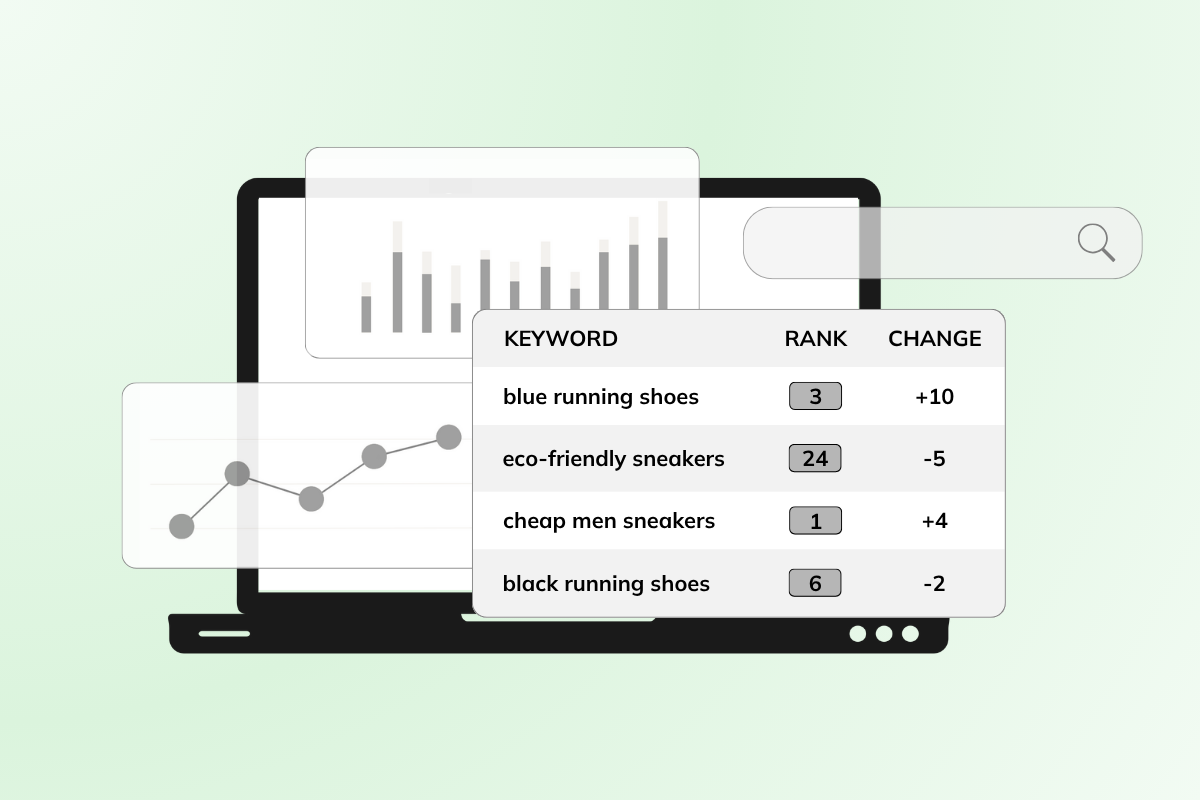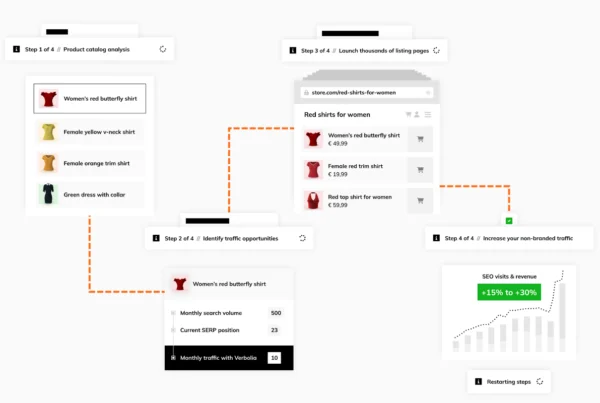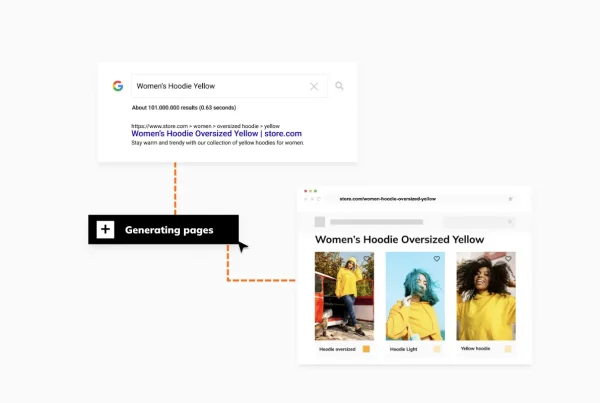How to find keyword opportunities for e-commerce SEO (beyond SEMrush & Ahrefs)
Estimated reading time: 7 minutes

If you’re running SEO for an e-commerce site, one thing is clear: scaling organic traffic starts with matching the right products to the right keywords and creating dedicated listing pages for them.
These listing pages are a goldmine. In many cases, they account for up to 70% of organic traffic. That means building and optimizing them represents huge growth potential for e-commerce SEO marketers.
But the big question is: how do you find keywords to add to your listing pages?
The truth is, you don’t need to rely solely on expensive tools like SEMrush or Ahrefs. Some of the best opportunities are already hiding in your own data.
In this article, we’ll explore five essential sources to find valuable keyword opportunities and how to build a scalable SEO keyword list for your product pages. Tips 2, 3, and 4 are especially useful for discovering long-tail keywords that align closely with your catalog.
Platforms like SEMrush, Ahrefs, SimilarWeb, and others are excellent for discovering:
- Keywords your competitors rank for
- Search volume and difficulty
- SERP trends and content gaps
Google Search Console is also a fantastic tool to identify real queries driving traffic to your site.
They’re especially useful to analyze broad search demand across your niche. However, these tools aren’t perfect for large product catalogs. You often hit volume limits, and the suggestions aren’t always tailored to your inventory.
2. Leverage your internal site search data
Your on-site search bar is one of the most overlooked SEO data sources.
When users come to your site and search for terms, they’re telling you exactly what they want, in their own words.
That makes your internal search queries:
- Highly intent-driven
- Often directly aligned with your product offering
- Sometimes outside the scope of traditional SEO tools
How to identify keywords from internal search?
Export your internal search terms, filter by search volume and product availability, and feed them into your keyword strategy.
3. Extract n-grams from your product titles
This is where things get powerful.
By analyzing the titles of your existing product titles, you can identify common combinations of words, also known as n-grams. For example:
- “blue shoes”
- “wireless headphones”
- “running shoes”
Why does this work? Because n-grams reflect the actual language of your inventory, not generic keywords from a tool. They help you build a relevant, catalog-specific keyword database.
How to identify keywords from your product titles?
Use NLP (Natural Language Processing) tools or even spreadsheet formulas to extract frequent n-gram combinations from your titles.
4. Combine attributes to expand keyword coverage
Once you have a base keyword like “running shoes,” you can multiply opportunities by combining it with attributes from your product catalog such as:
- Colors: blue running shoes, black running shoes
- Sizes or types: running shoes size 10, women’s running shoes
- Brands: Adidas running shoes, Nike trail running shoes
- Intents or qualifiers: cheap running shoes, eco-friendly running shoes
This method helps you scale your long-tail SEO efforts and create hyper-relevant and targeted listing pages that match high-intent queries.
Important: not every combination is worth creating a page for. Not every combination deserves a page. Use keyword research to validate volume, intent, and match with available products before publishing.
How to identify keywords from your product titles?
Use the same NLP process from step 3 to extract attributes, then systematically combine them with n-grams from product titles.
5. Manual review
Once you’ve built your keyword list, don’t skip the manual check.
Even if a keyword looks promising, you need to ask:
- Is the keyword aligned with our brand positioning?
- Is it worth investing in a dedicated page?
Review your list to keep only the keywords that make sense strategically and commercially.
Unlock smarter keyword strategy with Verbolia’s Traffic Opportunity tool
At Verbolia, we’ve developed a tool called Traffic Opportunity, built into our Vpage solution and also available as a standalone product to support your keyword research. It combines the sources outlined in this article, plus additional ones, enhanced with smart algorithms to surface high-potential opportunities.
Our solution is especially effective for large e-commerce websites, often identifying thousands of long-tail keyword opportunities. For example, Ulla Popken uncovered thousands of valuable keywords using the tool and 2,000 of which now rank in the top 10 of search engine results.
You can start playing with our tool for free (no credit card required):
Get search volume insights
We’ll show you the average monthly search volume for every high potential keyword that we’ve extracted from your product catalog.
Keyword rankings
We also provide you with your current keyword rankings.
Competitor insights
Apart from showing you all of this data for your own website, we also benchmark your keyword positions against those of your main competitor(s).
Build a keyword strategy that mirrors your catalog
It’s easier than ever to generate thousands of keyword ideas. But for e-commerce SEO to work, those keywords must:
- Match products you actually sell
- Align with real search intent
- Scale without thin content issues
By tapping into external tools, internal search, and your product data, you can uncover real opportunities and prioritize the most valuable pages to create or optimize.
About The Author
How can Verbolia help your e-commerce platform.


